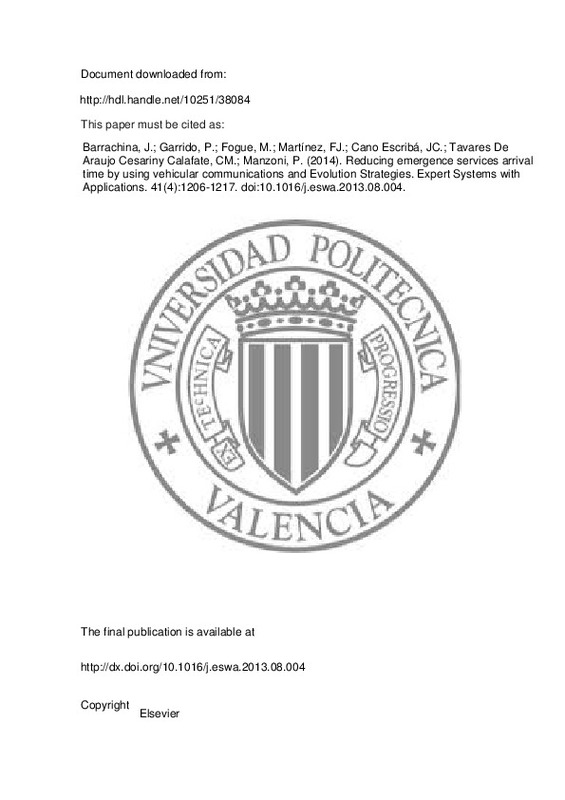JavaScript is disabled for your browser. Some features of this site may not work without it.
Buscar en RiuNet
Listar
Mi cuenta
Estadísticas
Ayuda RiuNet
Admin. UPV
Reducing emergence services arrival time by using vehicular communications and Evolution Strategies
Mostrar el registro completo del ítem
Barrachina, J.; Garrido, P.; Fogue, M.; Martínez, FJ.; Cano Escribá, JC.; Tavares De Araujo Cesariny Calafate, CM.; Manzoni, P. (2014). Reducing emergence services arrival time by using vehicular communications and Evolution Strategies. Expert Systems with Applications. 41(4):1206-1217. https://doi.org/10.1016/j.eswa.2013.08.004
Por favor, use este identificador para citar o enlazar este ítem: http://hdl.handle.net/10251/38084
Ficheros en el ítem
Metadatos del ítem
| Título: | Reducing emergence services arrival time by using vehicular communications and Evolution Strategies | |
| Autor: | Barrachina, Javier Garrido, Piedad Fogue, Manuel Martínez, Francisco J. | |
| Entidad UPV: |
|
|
| Fecha difusión: |
|
|
| Resumen: |
Nowadays, traffic jams in urban areas have become a problem that keeps growing every year since the number of vehicles in our cities is continuously increasing. One of the most common causes producing traffic jams are ...[+]
|
|
| Palabras clave: |
|
|
| Derechos de uso: | Reserva de todos los derechos | |
| Fuente: |
|
|
| DOI: |
|
|
| Editorial: |
|
|
| Versión del editor: | http://dx.doi.org/10.1016/j.eswa.2013.08.004 | |
| Código del Proyecto: |
|
|
| Agradecimientos: |
This work was partially supported by the Ministerio de Ciencia e Innovacion, Spain, under Grant TIN2011-27543-C03-01, as well as by the Fundacion Universitaria Antonio Gargallo, the Obra Social de Ibercaja, under Grant ...[+]
|
|
| Tipo: |
|







![[Cerrado]](/themes/UPV/images/candado.png)


